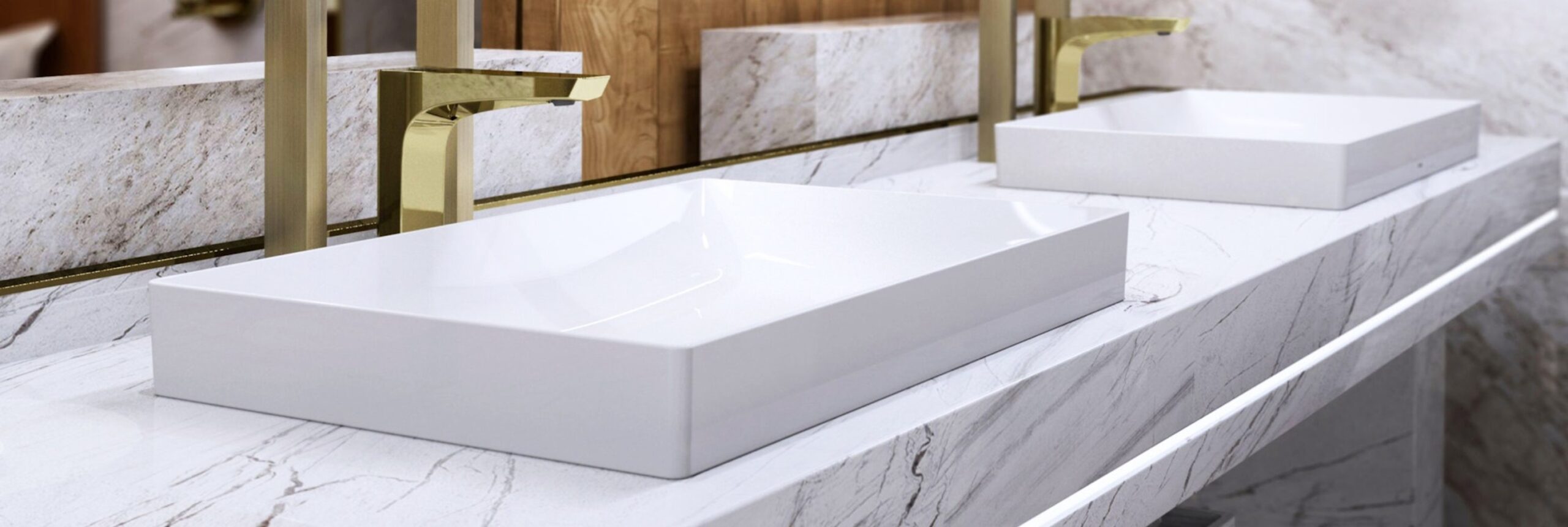
In the realm of commercial restrooms, sustainability has traditionally been associated with core elements such as water conservation, the use of green products, and energy savings. However, in recent years, the landscape of sustainability in commercial restroom design has witnessed the emergence of new and innovative trends that are shaping the way we approach eco-friendly practices in these spaces.

Smart Technologies and Automation
The integration of smart technologies and automation has become a significant trend in sustainable restroom design. Smart fixtures, including sensor-activated faucets, toilets, and hand dryers, are gaining popularity. These technologies not only enhance user experience by promoting touchless operation but also contribute to resource conservation by optimizing water and energy usage based on real-time needs.

Material Innovation
Sustainable materials are now at the forefront of restroom design. The industry has seen a surge in the use of eco-friendly and recycled materials for various restroom components, such as countertops, flooring, and partitions. Designers are increasingly prioritizing materials with lower environmental impact, both in terms of production and end-of-life disposal.

Waterless Fixtures
Going beyond traditional water-saving fixtures, the trend towards waterless fixtures is gaining momentum. Waterless urinals, for example, eliminate the need for flushing, saving substantial amounts of water. This innovation aligns with a broader commitment to reducing water consumption and promoting water efficiency in commercial spaces.

Biophilic Design
Biophilic design principles, which emphasize a connection with nature in the built environment, are being incorporated into restroom designs. This can involve the use of natural materials, ample natural light, and even the inclusion of living plants within the restroom space. Beyond aesthetic appeal, biophilic design has been linked to improved well-being and enhanced sustainability.






Waste Reduction and Recycling
The sustainability trend in commercial restrooms extends beyond water and energy conservation to address waste reduction. Designers are exploring innovative ways to incorporate recycling bins, composting systems, and sustainable waste disposal practices within restroom spaces. This holistic approach aims to minimize the environmental impact throughout the restroom’s lifecycle.

User Education and Engagement
Increasingly, there is a focus on user education and engagement as part of sustainable restroom design. Clear signage and educational materials within the restroom space can inform users about water-saving features, proper waste disposal practices, and the overall environmental impact of their actions. This approach aims to create a sense of responsibility and mindfulness among restroom users.

Adaptability and Flexibility
Sustainable restroom design is also embracing adaptability and flexibility. Designers are incorporating modular and flexible fixtures and layouts that can be easily reconfigured to accommodate changing needs. This adaptability contributes to the longevity of restroom spaces, reducing the frequency of renovations and associated environmental impacts.

In summary, while traditional aspects like water conservation and energy efficiency remain crucial in sustainable commercial restroom design, the evolving landscape is witnessing the integration of cutting-edge technologies, innovative materials, and a holistic approach that extends beyond resource conservation to encompass a broader commitment to environmental responsibility. These trends collectively shape the future of sustainable restroom design, offering a more comprehensive and forward-thinking approach to creating environmentally-friendly commercial spaces.



